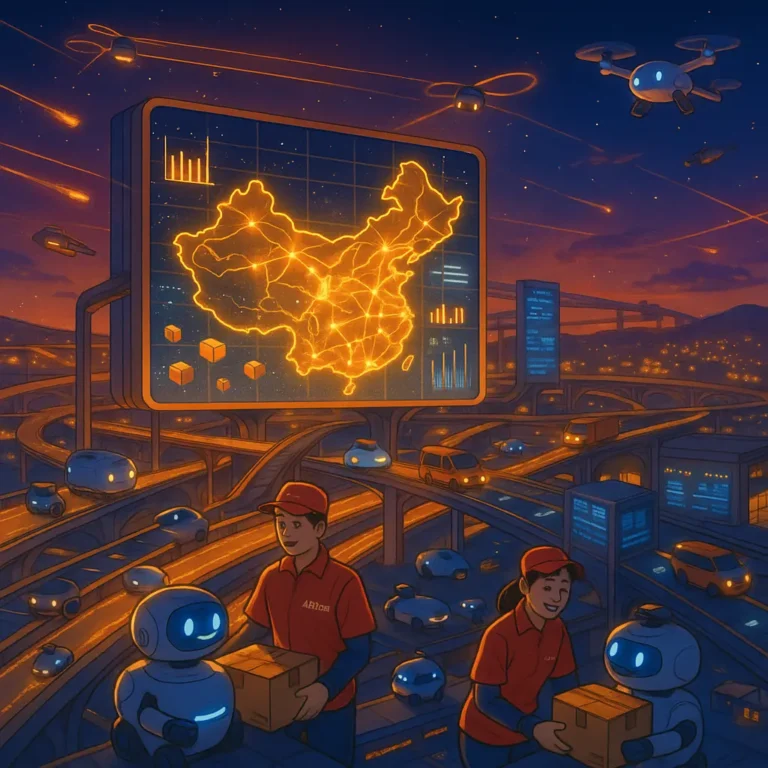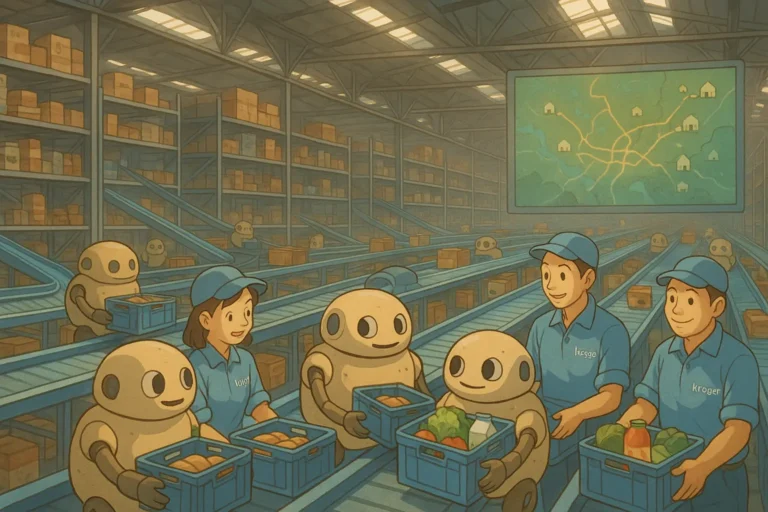
During the COVID-19 pandemic, supply chains everywhere collapsed like dominoes. One crack revealed another. Nowhere was the pressure more visible than in the global chip shortage that crippled manufacturing across the world. However, while the biggest automakers paused production, rewrote delivery schedules, and lost billions, Tesla’s supply chain thrived.
Tesla did not escape the semiconductor shortage. In fact, it was more exposed than most, stressed, and tested like every other. Yet the supply chain was able to bend without breaking. In the same period when OEMs were shutting down production, Tesla managed to deliver more vehicles, kept factory lines moving, and the supply chain emerged stronger, while competitors fell behind.
For African supply chain professionals, this story isn’t just interesting, it’s urgent. It speaks to survival, resourcefulness, and how quick thinking can rewrite an outcome. This is about facing a shortage or any other crisis with clarity. About using what you have, not wishing for what you don’t. And for African logistics and procurement leaders, this is the perfect time to act.
Tesla’s Supply Chain in Crisis: Global Shortage, Local Chaos
In 2020, global factories stopped, orders for chips dropped, and semiconductor makers shifted focus from cars to laptops, phones, and gaming systems. When auto demand returned months later, automakers scrambled for parts that were no longer available. What followed was a semiconductor supply chain nightmare.
More than 10 million cars were abandoned in the middle of production in 2021 and 2022 due to chip scarcity. That cost the industry over $200 billion. Production lines stood still as new cars waited in fields, half-built. Basic microchips, which cost as little as $1, held up vehicles worth $50,000.
Tesla’s manufacturing system was also hit.
From airbags to sensors, chips power every function. Musk described the situation bluntly: “Our biggest issue was the chip that controls airbags and seatbelts. We couldn’t ship cars without it.”
But Tesla logistics and supply chain teams didn’t fold. They restructured, rewrote code, sourced differently, and rebuilt part of the system in weeks. Their survival wasn’t luck. It was action.
Read more: Why Nike’s supply chain failed during the pandemic.
How Tesla’s Supply Chain Overcame the Semiconductor Crisis
Tesla is the foremost EV company in the world. As you can imagine, that requires a lot of chips. So the crisis was particularly painful. Nonetheless, the company’s supply chain was able to thrive. This is how the company managed it:
1. Refused to Cut Chip Orders
In 2020, while other carmakers canceled orders, Tesla held firm. They kept forecasting growth. That bet paid off. When chip demand spiked in late 2020, Tesla stayed at the front of the queue.
Traditional automakers had to start over—renegotiating supply, waiting months, losing slots at chip factories. Tesla didn’t.
2. Rewrote Firmware for New Chips
When one chip wasn’t available, Tesla found another. But new chips didn’t come with plug-and-play compatibility. Tesla’s engineers rewrote the software to match different chips. They validated 19 new semiconductors across various systems in a few weeks. Most automakers would need six months for the same task, if they tried at all.
This move turned a shortage into an opportunity. Tesla kept building cars, even with non-standard parts. They controlled both hardware and software, and used that control to stay flexible.
3. Simplified Vehicle Features
Tesla made quick trade-offs. Some cars are shipped without USB ports. Others lacked lumbar support on the passenger seat. The team kept production focused on essentials. Features that could be skipped or added later were removed. No system is perfect, especially during such a crisis. But Tesla preserved throughput.
That move helped the supply chain meet orders, generate revenue, and maintain delivery momentum.
4. Sourced Directly and Paid Upfront
Instead of relying only on Tier-1 suppliers, Tesla worked directly with chipmakers. In some cases, they paid in advance or bought parts in bulk. When others begged for allocation, Tesla already had its supply secured. However, doing this meant some heavy investment in relationships and the readiness to invest in continuity.
This way, Tesla’s supply chain was able to build a buffer stock and avoid line stoppages.
5. Relied on Vertical Integration
Tesla’s supply chain controls most of the company’s production stack, unlike other traditional vehicle manufacturers. From hardware to software, the company manages most of its operations in-house. This meant that when supply chain problems emerged, Tesla could rework systems without waiting on third-party vendors.
That in-house agility made redesigning the supply chain much faster. It also meant Tesla didn’t need permission to change. They just did.
Read more: Discover McDonald’s supplier management principles.
Lessons for African Supply Chains and Business Leaders
Tesla’s supply chain response didn’t depend on infinite capital or rare materials. It came from decision-making, well-integrated flexibility, and the readiness to break convention. African logistics and supply chain professionals can apply the same thinking with local tools and realistic budgets.
1. Build Flexibility Into Sourcing
Don’t lock your operations to one source. Identify multiple suppliers for every critical component. Test alternatives early. Ask your team hard questions such as: if our top supplier disappeared tomorrow, who could fill the gap?
Here is a great example: A Kenyan machinery importer created dual supply tracks. One from Asia and another from North Africa. When shipping delays hit Asia in 2022, they switched to North African sources and avoided stockouts.
2. Turn Software and Systems into Strengths
Tesla didn’t survive by swapping chips alone. They thrived because they controlled the code. African firms, especially OEMs must also think beyond hardware. Whether it’s fleet management, inventory systems, or warehouse automation, software must be an asset, not a liability.
One key strategy for achieving this is by investing in local coding capacity or partnering with African tech firms to build systems you can adjust quickly.
3. Keep a Strategic Buffer
Just-in-time worked when borders were open and shelves were full. Now, every logistics leader must hold critical stock. Not excess. Just enough to ride out a 4-8 week delay. Take, for example, a Nigerian pharmaceutical distributor that keeps a 6-week inventory buffer for top-selling drugs. When a shipping container was delayed in 2023 due to port congestion, customers never noticed.
4. Focus on Core Deliverables
When in a supply chain crisis, simplify operations. Focus on essentials. Use parts or processes that can be modified and pause fringe SKUs or complex features if needed. Now, it is important to note that this isn’t cutting quality. It’s preserving operations. Tesla’s supply chain could decide to remove USB ports because they knew it would keep cars on the road.
You can make the same choices for packaging, materials, or service levels.
5. Focus on Building Supplier Relationships, Not Transactions
Tesla didn’t just order chips. They spoke to manufacturers, shared plans, and paid upfront. That trust earned them priority when others were ignored. More African supply chains should treat suppliers as partners. Invite them into planning, share demand forecasts, and reward performance. In tough times, those bonds will buy you time.
Read more: How Zipline’s drone technology is transforming healthcare logistics in Africa.
What the African Supply Chain Sector Must Do Next
Tesla’s supply chain wasn’t magical. It was methodical. It was built on speed, clarity, and boldness. This kind of system isn’t limited to Silicon Valley. African logistics professionals can adapt the same tactics. They must:
- Treat information as a resource, not a report.
- Make supply chain agility a goal, not a reaction.
- Design your systems with movement in mind, not rigidity.
Global logistics crises, pandemic supply chain disruptions, and the recent trade and tariff wars have reshaped the world. But within that change lies a roadmap. Tesla took bold steps during the automotive chip shortage. African supply chains can do the same.
By aligning procurement strategies in periods of shortage, integrating digital supply chain systems, and embracing agile supply chain strategies, our supply chain operations will survive and build endurance.
The microchip scarcity may have shaken the world, but it also revealed where resilience lives.
If Tesla could rewire its manufacturing plan at mid-crisis, African supply chains could, too. With grit, planning, and action, our response can be faster. Stronger. Smarter. And this time, the power won’t come from what we have. It will come from what we do.

Obinabo Tochukwu Tabansi is a supply chain digital writer (Content writer & Ghostwriter) helping professionals and business owners across Africa learn from real-world supply chain wins and setbacks and apply proven strategies to their own operations. He also crafts social content for logistics and supply chain companies, turning their solutions and insights into engaging posts that drive visibility and trust.





